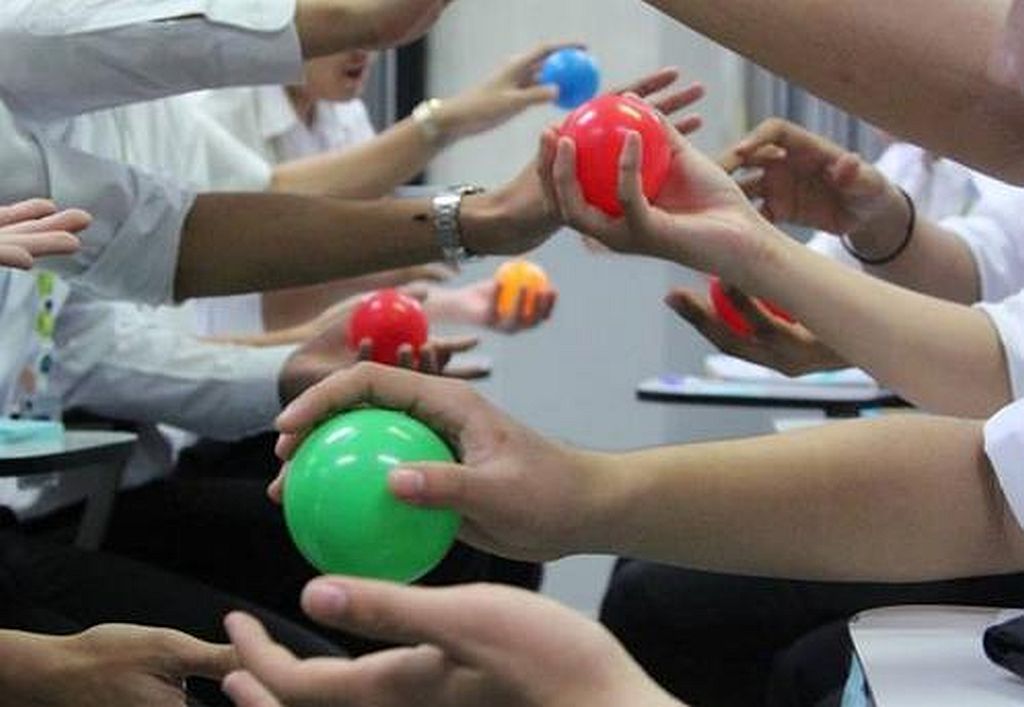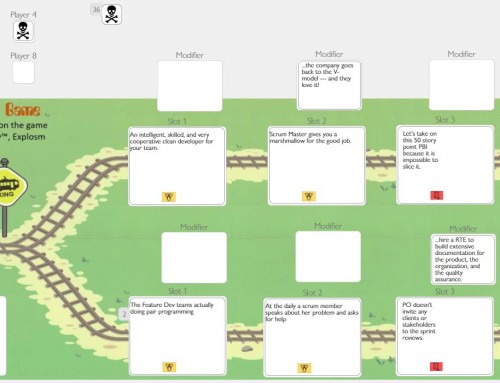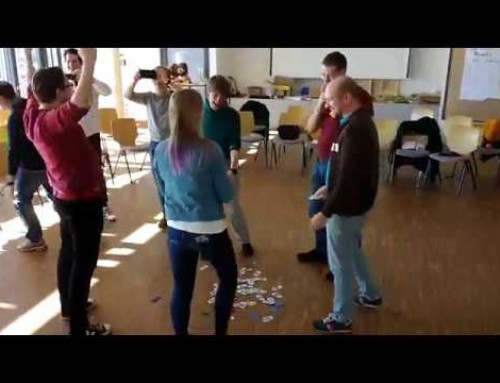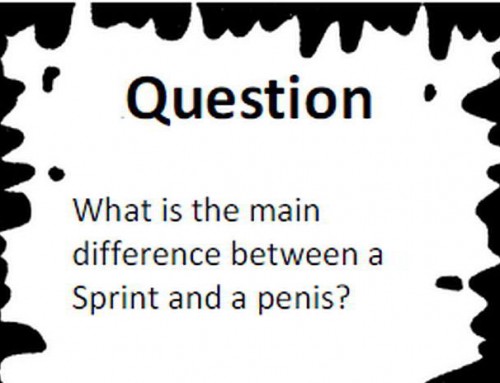Ball Point Game - Introducing Agile By The Fun Way
The objective is to pass as many balls as possible in the given timeboxes through the team following certain rules. Dropped balls reduce as "defects" the final result.
The game is a great opportunity to introduce people to basic agile principles and values in a fun and all-senses involving way.
Are You Kidding, A Game?
Imaging, you are an external coach or a corporate internal established Scrum Master, or an upper manager interested in this fuzzy stuff called "Agile".
Now, imaging, on one day you should introduce a new team to the agile mindset as soon as possible, and with as less time as possible. And, middle managers and project managers will participate in addition.
Seems to be an impossible assignment. How can you succeed? – But wait. Do not try it by giving the standard intellectual lecture and Powerpoint about agile values, agile principles, self-organizing teams, and all these buzzwords.
Use a game instead. More precise, a physical agile game. Concrete, exercise the Ball Point Game, aka as Ball Flow Game.
Stuart Brown's research shows playing is not just joyful and energizing – it's deeply involved with human development and intelligence. ((Stuart Brown is a medical doctor, psychiatrist, clinical researcher, and the founder of the US National Institute for Play.)) Playing is fun, even joyful. It refreshes and energizes us.
And playing is a great tool for learning. For moments, you are involved with all your senses. You are involved with your complete body.
Most importantly, you make many physical, and emotional experiences, and not only rational ones. Both brain hemispheres are involved, the left which controls the right side of the body, and is the more academic and logical side of the brain, and as well the left one which controls the left side of the body, and is the more artistic and creative side of the brain.
How The Game Works
Boris Gloger created The Ball Point Game in 2008. The game is a great opportunity to introduce people to basic agile principles and values in a fun and all-senses involving way.
- Trust – See how to build trust in the team and in individuals.
- Self-organisation – See how the team makes decisions to work best, without control from outside managers.
- Adapt & Inspect – See how the team steps back and reflects in retrospectives on a regular base to improve the own work.
- Timeboxed, incremental delivery – See how the team estimates, plans, and improves quality in an iterative manner.
- Agile ceremonies – Geting acquaintance with "Sprint", "Retrospective", "Planning", Estimation".
- Learning – See how fast the team succeeds.
The game simulates an agile production process. It is basically an analogue of the scrum process. The team will self-organize and form a process based on the rules provided. The objective is to pass as many balls as possible in the given timeboxes through the team by following certain rules.
Resources & Playground Needed
- Book a room large enough all participants can move around freely; remove all obstacles: chairs, tables, etc.
- You need a flipchart and a stopwatch.
- You need 100 balls like for kids ball pools.
Group Size
- You play the game best with more than 6 participants. The more the best.
- If possible bring some observers to the game. They only observe from "the outside", they do not play.
The Rules
The rules are straightforward. To score a point:
- Everyone is part of one team.
- Each ball must have air-time.
- Each ball must be touched at least once by every team member.
- Balls can't be passed to your direct neighbor to your immediate left or right.
- Each ball must return to the same person who introduced it into the system.
- There are a total of five iterations.
If you want, you can increase the experience by introducing "defects":
- If a ball drops and can be fetched it can be put into the game again.
- All balls not be fetched at the end of the iteration count as "defects" and are subtracted from the final result.
- Alternative: state a mechanism and "penalty" for dropped balls fed in the next sprint as additional work.
How To Play
In the game, there are two roles, only: the team, and the Product Owner (given by the facilitator).
Here’s how to play the game.
- Allow the team to prepare and to determine how they will organize themselves. (2 min)
- Ask the team for an estimate how many balls they can pass through the system at the first run.
- Run the first iteration. (2 min)
- Allow the team to discuss how to improve the process. (1 min)
- Repeat for five iterations.
Start with the third iteration to challenge/stress the team. Demand more than the team wants to deliver. If you need to, make up some ridiculous statistics such as “The world record is 150 points. Can you beat that?” – “If you don't give me 160 points I will go to your competitor <placeholder>” – “The last time I facilitated the game the team gave me 500 points.”– try to become a stressy, pain-in-the-ass, product owner asshole 😉 - Document for each iteration all numbers at a flipchart and create a visual chart at end.
- Debriefing. Take as much time as needed to discuss the learnings and observations.
My real-life experience: when the game takes 30 min, a very valued discussion afterwards may take 2 hours.
Debriefing
Possible questions for debriefing.
- What did you learn from the game?
- How did the team make decisions?
- How would things have gone differently if the team had an appointed leader?
- How important were retrospectives?
- Did you realize stress? – When?
- Why reduce dropped balls the final result? – Meaning of defect handling.
- Which team dynamics did you experience?
Update 1.Dez, 2017 – Quotes from a workshop I ran with a client (in German):
- „Erstaunlich schnell hat das Team seine organisatorische Aufstellung alleine gefunden. Mit einem Manager hätte es langsamer gedauert.“
- „Ich fühlte mich als Teil des gesamten Teams, obwohl ich auf meinen Bereich fokussiert war.“
- „Ab einem bestimmten Punkt war ich in einer Art von Flow.“
- „Wichtigstes Learning: die Bedeutung der Retrospektiven zum Lernen und ständigen Verbessern.“
- „Obwohl der Spielleiter (Michael) immer höhere Ergebnisse forderte, haben wir uns (als Team) von ihm nicht stressen lassen.“
Downloads
- The ready out of the box Plays-in-Business Ball Point Game Package
- Full Game documentation by Boris Gloger
Further Readings
- https://scrumology.com/from-the-archives-the-ball-point-game/
- https://www.linkedin.com/pulse/coaching-scrum-ball-point-game-patrick-tanna/
- Excel Spreadsheet & VBA Code by Availagility, UK.
- A game variant: http://www.scrum-breakfast.com/2009/05/3-player-ball-point-game.html
: kulawat via tumblr, .







Leave A Comment